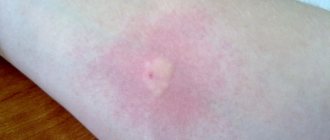Vaccine options
To prevent tetanus, all children are given tetanus toxoid as part of combination vaccines.
Types of tetanus vaccines: AC - tetanus toxoid (if necessary, for example, for puncture injuries, etc.), DTP - adsorbed diphtheria-tetanus-pertussis vaccine, ADS - Adsorbed diphtheria-tetanus vaccine, ADS-m - Adsorbed diphtheria-tetanus vaccine vaccine with reduced content of diphtheria toxoid. And also the vaccines “Bubo-Kok”, “Bubo-M”, “Infanrix Penta”, “Infanrix Hexa”, “Pentaxim”, “Tetraxim”, “Infanrix”.
Principles and purposes of vaccination
Since natural immunity does not exist, that is, immunity after an illness is short-lived, susceptibility to the disease is very high, and the course of the disease is extremely severe, with a high probability of death, you should be vaccinated against this dangerous infection. Tetanus can be rapidly prevented through immunization and vaccines containing tetanus toxoid, which are included in childhood immunization programs worldwide.
Isolated tetanus vaccination can be successfully used to immunize people of any age group, both children and adults. It is especially important to vaccinate pregnant women who have not previously been vaccinated against tetanus, as this can reduce the risk of maternal and neonatal (infant) tetanus to virtually zero. In addition, antibodies against tetanus are passed from mother to newborn, protecting the baby for two months. To develop full immunity to infection, it is necessary to administer five doses of tetanus vaccine. It is recommended that adults, especially women of childbearing age, be revaccinated throughout their lives, which will ensure immunity to infection for life. In Russia, adults are recommended to receive a booster vaccination against tetanus every 10 years.
Vaccination is carried out three times, with an interval of 45 days and a single revaccination 12 months after the 3rd vaccination, i.e. at 18 months of age. Further, according to the vaccination calendar, revaccination is carried out with ADS-M toxoid at 7 and 14 years of age and subsequently every 10 years. Emergency prevention of tetanus consists of primary surgical treatment of the wound and the simultaneous administration of a vaccine (ADS or ADS-M) and human tetanus immunoglobulin (TSHI), or purified concentrated antitetanus serum (PTS).
Why is tetanus dangerous?
Tetanus bacilli can remain in sea and fresh water for up to six months, in soil for up to several years, but it is not the bacteria themselves that are dangerous, but their toxins. When clostridia tetanus enters a wound, especially a deep one, the pathogen multiplies and produces a large amount of toxin. The development of the disease in 80% of cases develops into a generalized form, when there is a focus and subsequent areas covered, which leads to human disability or death. Even small but deep tissue damage is enough for the development of tetanus.
Madina Abdulaeva told how the onset of the disease can occur:
“The first sign of the disease may be convulsive clenching of the jaw muscles. Then the spasms move to the muscles of the face and larynx, and it becomes difficult for the child to swallow. The cramps then spread to the back muscles and other muscles of the body. Spasm of the laryngeal muscles can cause sudden death. The mortality rate for developed tetanus is from 10 to 70%, depending on the age and health of the patient. Timely medical assistance can save the patient’s life.”
Tetanus affects all age groups. In Russia, up to 35 cases of the disease are registered annually. About 70% of cases are unvaccinated people over 65 years of age.
Tetanus is rare only in countries with developed medicine. Where medical services are not widely available to the population, tetanus is a real threat, claiming the lives of not only children, but also adults.
pixabay.com/
Vaccine effectiveness
The effectiveness and efficiency of tetanus toxoids have been documented. In most clinical trials, effectiveness ranged from 80% to 100%. The introduction of tetanus vaccination in the United States in the 1940s caused the overall incidence of tetanus to decline from 0.4 per 100,000 population in 1947 to 0.02 per 100,000 population in the late 1990s. In a double-blind, controlled study conducted in rural Colombia, neonatal tetanus did not occur in neonates born to mothers receiving double or triple doses of the vaccine, while in an unvaccinated control group of neonates the mortality rate was 78 deaths per 1000 live births. The only means of prevention is vaccination, the effectiveness of which is 95-100%. Strong immunity against diphtheria and tetanus lasts approximately 5 years, after which it gradually fades, so revaccination against these diseases is required every 10 years.
Why is it necessary to get vaccinated against tetanus?
Tetanus vaccination is included in the compulsory vaccination calendar, since this infection cannot be eradicated. Important facts about tetanus infection:
- The disease belongs to zooanthroponoses and its causative agent is normally present in the body of both humans and animals (in the intestines). With feces, tetanus bacteria enter the soil and water, which significantly increases the likelihood of contracting the disease when the skin is injured.
- The causative agent of the disease is a gram-positive rod, which under unfavorable conditions outside a living organism is transformed into spores. Tetanus spores tolerate low temperatures well, remain viable when boiled for three hours, and live in soil for up to 100 years.
- A previous infection (if a person has had tetanus) does not form lifelong immunity, so you can get tetanus again.
- Tetanus has a very high mortality rate. Infected children die in 96% of cases, and adults in 16–80%.
Adverse reactions
If vaccination is carried out with the DPT vaccine, then it should be remembered that vaccines are the most reactogenic, “heavy” childhood vaccines. On average, post-vaccination reactions occur in a third of vaccinated people, and not for every vaccination. They are manifested by a moderate increase in body temperature and mild malaise within 24 hours after vaccination. As a rule, all adverse events when administering the DPT vaccine develop no later than 72 hours (3 days) after vaccination and last no more than 48-72 hours.
Other types of tetanus vaccines have very low reactogenicity, that is, the development of post-vaccination reactions is very rare. Usually the vaccination is easily tolerated.
Local reactions such as redness of the injection site, swelling, induration or the formation of a “bump” are relatively common. These reactions are normal and go away on their own. Today, according to the World Health Organization, tetanus vaccination can cause a number of side effects that are not a serious health disorder and can be easily treated. Possible side effects of the tetanus vaccine include the following conditions: seizure activity, dermatitis, rhinitis, bronchitis and pharyngitis.
Recommendations for children after vaccination
In general, after the vaccine is administered, the child can lead a normal lifestyle without any special restrictions, but certain rules must be followed during the post-vaccination period. After a tetanus vaccination, children are advised to limit their visits to crowded places, schools and kindergartens, since the immune system is greatly weakened and it is possible to catch another infection. Also, the child should be under the supervision of a doctor for some time, so that in case of an unexpected reaction the body can react quickly.
You can wet the injection site. The exception is swimming in natural bodies of water, where infection can occur. It is not recommended to rub the area with a sponge or rub the skin vigorously. Children should not exercise for the first three days after a tetanus shot.
Risk of post-vaccination complications
As with any other vaccine, in rare cases allergic reactions to vaccine components are possible. These complications are not related to the properties of the vaccine, but to the amount of excipients in specific preparations, whether the child is allergic to them and, in some cases, non-compliance with vaccination rules. It is significant that, according to statistics of post-vaccination complications in the United States, even severe allergic reactions to DTP vaccines have not led to serious consequences in any case since 1978, taking into account the fact that about 80 million vaccinations were given during this period. Possible specific complications of DTP vaccines include neurological complications, which are extremely rare. It is assumed that they may be caused by the fact that the toxins of pertussis bacillus (even inactivated) in combination vaccines tend to irritate the meninges of an extremely small proportion of susceptible children. Complications in the form of encephalopathy are less than 1 case per 300 thousand vaccinated people.
Currently, in the world, convulsions without fever are not considered a complication of vaccination. Research conducted in Great Britain in 1960-1970. indicate the same frequency of seizures in vaccinated and unvaccinated children. Moreover, the first manifestations of diseases such as epilepsy, organic damage, and are associated with vaccination only by a temporary factor.
The development of afebrile seizures indicates the presence of an organic lesion of the nervous system in the child, which was not taken into account and identified or could not be identified before vaccination for objective reasons. Therefore, in the event of afebrile seizures, a comprehensive neurological examination is necessary to make a diagnosis.
Symptoms and diagnosis
The incubation period for tetanus lasts from 3 to 21 days after infection. In most cases, the disease develops within 14 days. Symptoms may include:
- jaw spasm or inability to open your mouth
- sudden painful muscle spasms, often triggered by random noises
- difficulty swallowing
- convulsions
- headache
- high fever and sweating
- changes in blood pressure and increased heart rate.
Symptoms of neonatal tetanus include muscle spasms, often preceded by newborns' inability to suck or latch on, and excessive crying. Tetanus is diagnosed based on clinical signs and does not require laboratory confirmation. WHO defines a confirmed case of neonatal tetanus as a case of a child who had normal ability to suck and cry in the first 2 days of life, who lost this ability between 3 and 28 days of life and who developed rigidity or spasms. According to the WHO, to diagnose tetanus (not neonatal tetanus), at least one of the following must be present: persistent spasm of the facial muscles, in which the person's lips appear to be stretched into a smile, or painful muscle contractions. By this definition, it must be preceded by trauma or injury. However, tetanus is also diagnosed in patients who cannot remember having any wounds or injuries.
Contraindications
DPT vaccines are temporarily or absolutely contraindicated if the child has a progressive pathology of the nervous system or has had seizures without fever (afebrile). In this case, children are vaccinated with a vaccine without a pertussis component (PVC). Temporary and relative contraindications are exacerbation above 40 C, swelling and hyperemia at the site of vaccine administration over 8 cm in diameter).
There are practically no absolute contraindications to ADS and ADS-m vaccines, with the exception of severe allergic reactions to their previous administration.








